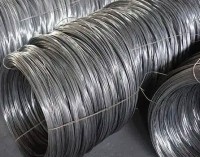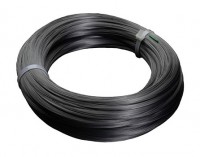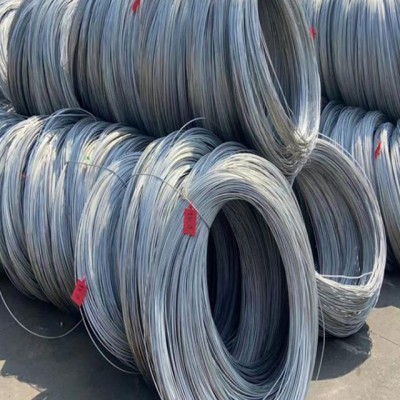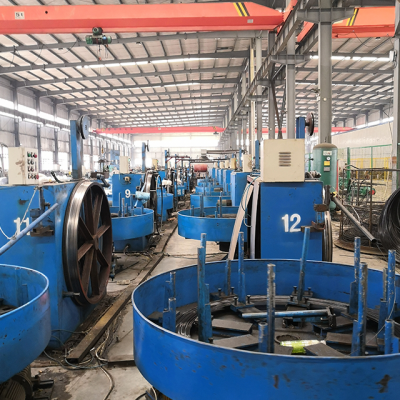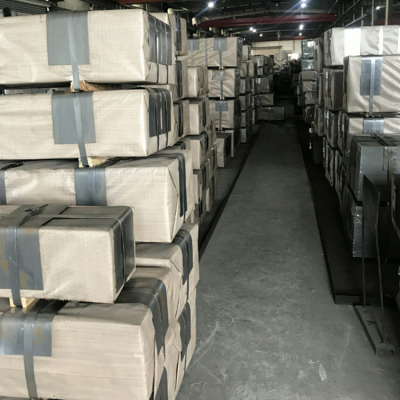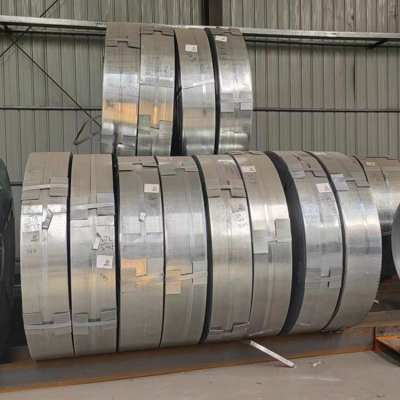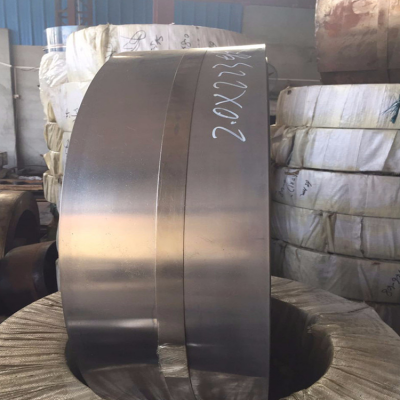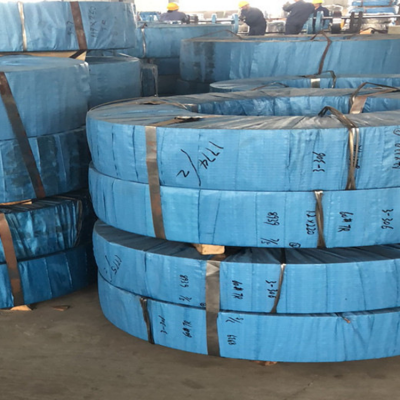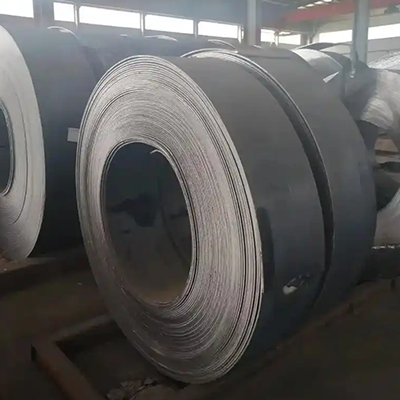
Stainless steel wire is an indispensable material in daily life or production. From everyday kitchen filters to protective nets for large buildings and automotive components, stainless steel wire has penetrated into every aspect of life and production with its own advantages. But will stainless steel wire rust? This issue has always been a matter of great concern to people. Below, we will analyze the mystery of stainless steel wire rusting from its basic properties, core advantages, and provide practical prevention and treatment solutions.

一、 Stainless steel wire is not pure steel, but an alloy
Most people believe that stainless steel is made from pure steel, but this idea is incorrect. The main material of real stainless steel wire is low carbon steel, with the addition of alloying elements such as chromium, nickel, and molybdenum, which are melted to form metal wire. The chromium content should generally not be less than 12%, because with sufficient chromium element, stainless steel wire has special properties.
Because the combination and content of alloy elements are different, stainless steel wires are also classified into different types. For example, 304 stainless steel wire contains 18% chromium and 8% nickel; 316 stainless steel contains more molybdenum element than 304. Different types of stainless steel wires have different application fields. For example, 304 stainless steel wire is often used in the food industry due to its stable properties; 316 stainless steel, due to its corrosion resistance, is widely used in medical equipment and other places with high requirements for corrosion resistance in hospitals.
二、 Core advantages of stainless steel wire
The widespread use of stainless steel wire is inseparable from its excellent performance.
1. Super corrosion resistance is the most significant advantage of stainless steel wire. The chromium element inside the steel wire forms a dense chromium oxide protective film on the surface, which can prevent corrosive media such as oxygen and moisture from coming into contact with the internal metal, providing self-protection.
2. High strength and toughness, stainless steel wire processed through processes such as Laba and annealing can not only withstand large tensile forces without easily breaking, but also has special flexibility, suitable for making products that need to withstand external forces, such as steel wire ropes, springs, etc.
3. It also has the characteristics of easy cleaning, beautiful and durable, with a smooth surface that is not easy to accumulate dust, and can present a metallic luster after polishing treatment, combining applicability and decoration.
三、 Does stainless steel wire really not rust?
The answer is negative. Stainless steel wire is not absolutely non stick and prone to rusting, but its probability of rusting is much lower compared to ordinary steel. Whether it rusts or not is related to the usage environment and daily maintenance. What situations can cause stainless steel wire to rust?
1. Firstly, there is the erosion caused by harsh environmental conditions. If stainless steel wire is exposed to high humidity and high salt environment for a long time, chloride ions and sulfides in the air will damage its surface chromium oxide protective film. When the protective film is damaged, the iron element inside will react with oxygen and moisture to form reddish brown rust.
2. Secondly, mechanical damage causes damage to the protective film. During transportation and installation, if the surface of stainless steel wire is scratched or collided, causing the partial chromium oxide protective film to fall off, and not treated in a timely manner, it will lead to easy rusting in the local area. In addition, when stainless steel wire comes into direct contact with other metals, electrochemical corrosion may also occur.
3. Material selection error. The corrosion resistance of different types of stainless steel wire varies greatly. If it is in a highly corrosive environment, choosing a material with weak corrosion resistance (such as 304 stainless steel wire instead of 316 stainless steel wire) can easily lead to corrosion problems even if it does not rust at the beginning after long-term use.

四、 How to prevent stainless steel wire from rusting?
To prevent stainless steel wire from rusting, it is necessary to take precautions and effectively avoid the problem of stainless steel wire rusting.
1. Choose the right material that matches the usage scenario
According to the corrosive strength of the usage environment, select the corresponding stainless steel wire model. For furniture and food use, 304 stainless steel wire can be used; For places like beaches, chemical plants, and medical equipment, it is necessary to choose 316 or 316L stainless steel wire (316L has lower carbon content and stronger corrosion resistance); For scenarios with high strength requirements and weak corrosion resistance, such as mechanical components, 201 stainless steel wire can be selected (note that 201 has lower corrosion resistance than 304 and is not suitable for humid environments).
2. Take good surface protection to avoid mechanical damage
When transporting stainless steel wire, waterproof and scratch resistant packaging materials should be used to avoid collision with sharp objects; During the installation process, try to avoid using hard objects to scratch the surface. If scratches are accidentally caused, they need to be polished in a timely manner and wiped with stainless steel cleaner to help restore the protective film on the surface. And avoid direct contact between stainless steel wire and metals such as carbon steel and copper. If contact is necessary, insulation material should be placed in the middle to prevent electrochemical corrosion.
3. Regular cleaning and maintenance to maintain dry grass on the surface
If used outdoors or in humid environments, it should be cleaned regularly. You can rinse the surface with clean water to remove dust and hooks. If there are oil stains or corrosive pollutants, gently wipe them with a cleaning agent, and then dry them with a dry cloth to avoid residual moisture. In addition, a thin layer of stainless steel specific protective agent can be regularly applied to the surface of stainless steel, which can effectively enhance the surface's corrosion resistance.
五、 What should I do if the stainless steel wire rusts?
If rust spots are found on the stainless steel wire, timely measures should be taken to effectively prevent the spread of rust.
1. Mild rusting
First, use fine sandpaper to polish off the rust spots, clean the surface rust, then rinse it with clean water, wipe the surface with stainless steel cleaner, and then dry it with a dry cloth. After the surface is completely dry, apply a layer of protective agent to prevent rusting.
2. Moderate rust
If the rust area is large, you can first spray stainless steel rust remover on the rusted area, let it stand for 5-10 minutes, wait for the rust to soften, use a cloth or soft bristled brush to wipe off the rust, then rinse thoroughly with water, wipe dry, and perform passivation treatment. Through passivation, a highly stable oxide film is formed on the surface to enhance corrosion resistance.
3. Severe rusting
If the stainless steel wire has already suffered severe corrosion and there are steel wire fractures and deformations at half a year old, it indicates that the structure has been damaged and cannot be used anymore. At this time, it is necessary to replace the stainless steel wire with a new one to avoid safety accidents caused by material failure.
Summary
Stainless steel wire is not a material that will never rust. Its corrosion resistance mainly depends on the surface chromium oxide protective film. Choosing the right material and doing daily maintenance can effectively extend the service life of stainless steel wire. Secondly, when purchasing stainless steel wire products, we can also inform customer service of the material and model you want, the industry in which it is applied, etc., so that customer service can provide you with suitable stainless steel wire for your use, avoiding the problem of rusting in the later stage due to incorrect material.
View document


 English
English 日本
日本 한국인
한국인 Français
Français Deutsch
Deutsch español
español Italiano
Italiano Portugal
Portugal Việt Nam
Việt Nam türkiye
türkiye عرب
عرب Русский
Русский čeština
čeština แบบไทย
แบบไทย Eesti
Eesti Gaeilge
Gaeilge Hmoob
Hmoob íslenskur
íslenskur Cymraeg
Cymraeg български
български اردو
اردو Polski
Polski Hrvatski
Hrvatski українська
українська bosanski
bosanski فارسی
فارسی lietuvių
lietuvių latviski
latviski עִברִית
עִברִית Română
Română Ελληνικά
Ελληνικά dansk
dansk Magyar
Magyar norsk
norsk Suomalainen
Suomalainen Nederlands
Nederlands svenska
svenska slovenský
slovenský Slovenščina
Slovenščina हिंदी
हिंदी Indonesia
Indonesia Melayu
Melayu Malti
Malti Kreyòl ayisyen
Kreyòl ayisyen català
català বাংলা
বাংলা Српски
Српски o'zbek
o'zbek



